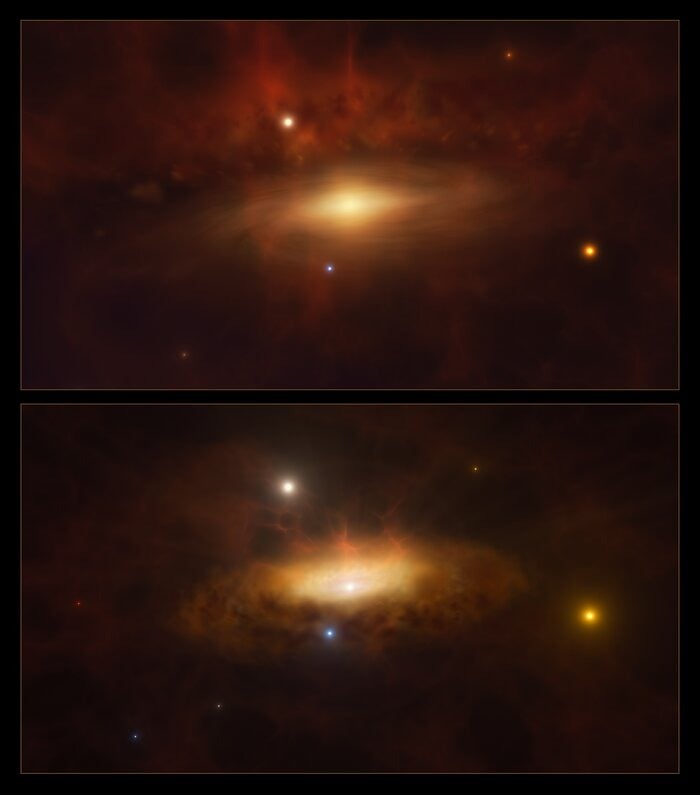
At the center of an average joe galaxy 300 million light-years away, something has just happened that has astronomers at the edge of their seats. Suddenly, a supermassive black hole inhabiting the center of a distant galaxy has come to life.
The galaxy, SDSS1335+0728, is otherwise unremarkable, and even the supermassive black hole at the center is of average mass — about 10 million times that of the Sun. But a new research paper on the galaxy, published in Astronomy and Astrophysics, could provide key insights into supermassive black holes and why they occasionally roar back to life.
“At this moment we are not sure about the explanation, but there are different options that we are managing to explain the data,” says Lorena Hernandez-Garcia, a postdoctoral researcher at the Institute of Physics and Astronomy at Valparaiso University in Chile.
Supermassive black holes occasionally experience tidal disruption events. These occur when matter approaches them and can’t escape their gravity, slowly becoming torn apart and swallowed. But those usually take place on the timescale of weeks or months, not years, and should at some point start to slowly dim — while whatever is causing the current event has only grown brighter. If the present observation represented such an event, “This would be the longest tidal disruption event ever seen,” Hernandez-Garcia says.
Related: Could you survive falling into a black hole? It depends.
Hernandez-Garcia proposes the current observation could represent a natural process of the galaxy, as supermassive black holes can go dormant and reactivate later, but what triggers the process isn’t well understood. If this is the case, astronomers have the perfect front-row seat to find out.
What can fall in toward a black hole and awaken it? The event could be caused by a passing star or stars, or a large complex of gas. But in this case, something is happening that is creating a slow, drawn out process.
Because the current event has lasted so long, astronomers have been able to observe it in different wavelengths of light. For instance, astronomers at the European Southern Observatory observed it in optical wavelengths while others captured it in ultraviolet and x-ray wavelengths, ideal for watching the intense events at the core of the galaxy at their most energetic outbursts. Just four years after its discovery, changes already have been seen in the x-ray part of the spectrum, offering a tantalizing mystery.
“The most interesting behavior right now is happening in the x-rays where we are starting to see the variations that are happening in the nucleus,” says Hernandez-Garcia. “We also got new radio observations that are under analysis. So we will have more interesting news soon!”









